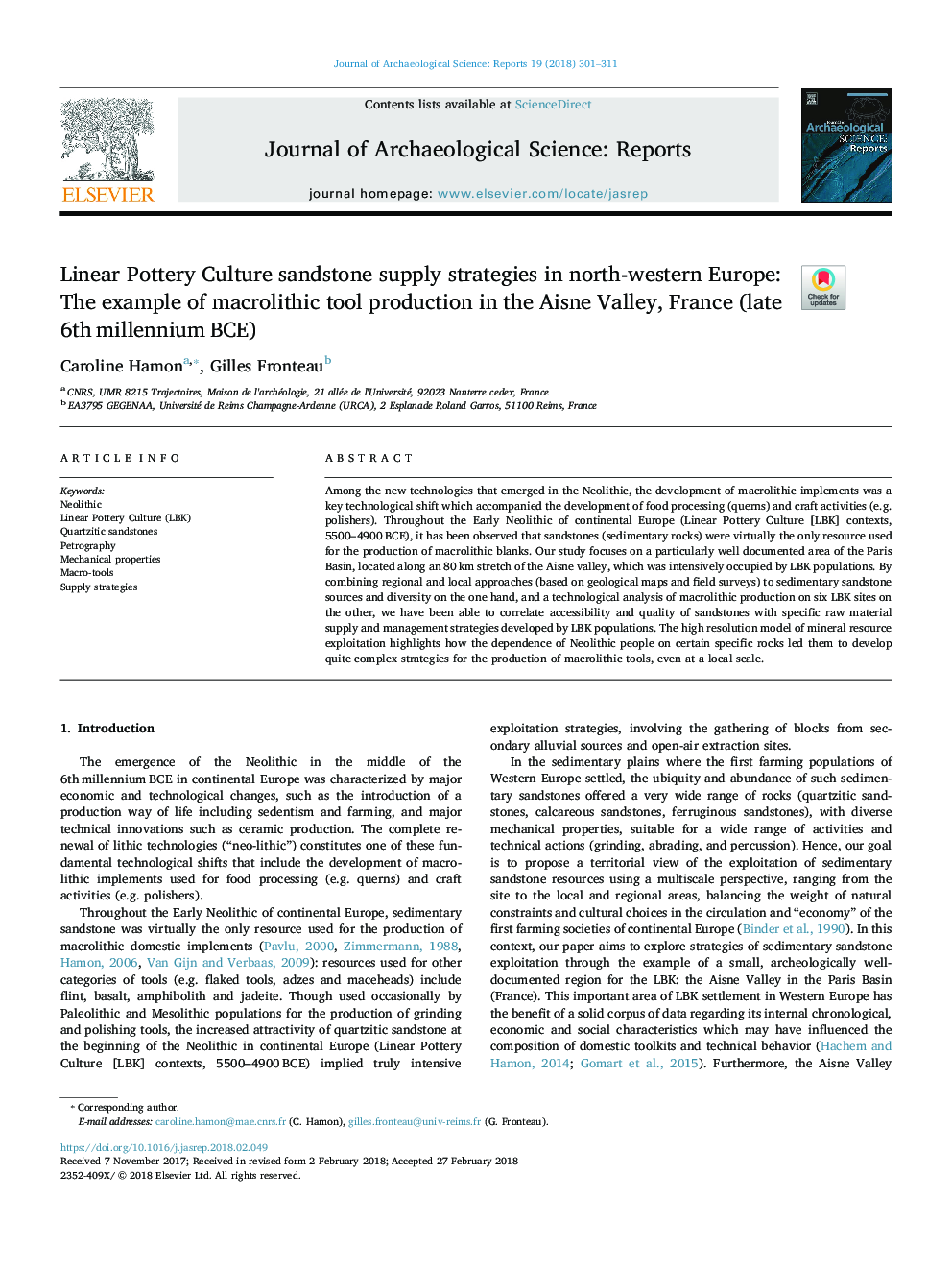| Article ID | Journal | Published Year | Pages | File Type |
|---|---|---|---|---|
| 7444694 | Journal of Archaeological Science: Reports | 2018 | 11 Pages |
Abstract
Among the new technologies that emerged in the Neolithic, the development of macrolithic implements was a key technological shift which accompanied the development of food processing (querns) and craft activities (e.g. polishers). Throughout the Early Neolithic of continental Europe (Linear Pottery Culture [LBK] contexts, 5500-4900â¯BCE), it has been observed that sandstones (sedimentary rocks) were virtually the only resource used for the production of macrolithic blanks. Our study focuses on a particularly well documented area of the Paris Basin, located along an 80â¯km stretch of the Aisne valley, which was intensively occupied by LBK populations. By combining regional and local approaches (based on geological maps and field surveys) to sedimentary sandstone sources and diversity on the one hand, and a technological analysis of macrolithic production on six LBK sites on the other, we have been able to correlate accessibility and quality of sandstones with specific raw material supply and management strategies developed by LBK populations. The high resolution model of mineral resource exploitation highlights how the dependence of Neolithic people on certain specific rocks led them to develop quite complex strategies for the production of macrolithic tools, even at a local scale.
Related Topics
Social Sciences and Humanities
Arts and Humanities
History
Authors
Caroline Hamon, Gilles Fronteau,
